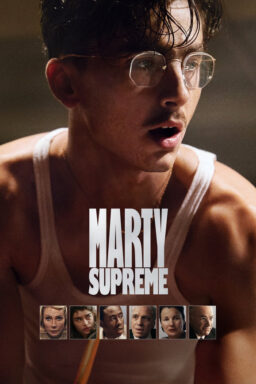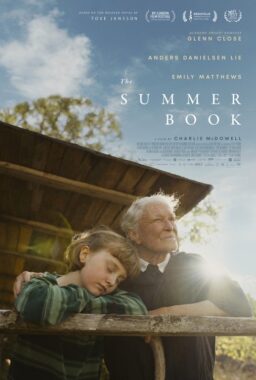PARK CITY, Utah — The most important little film festival in America opened here Thursday. The Sundance Film Festival, the annual trade fair for filmmakers working outside the studio system, will screen more than 100 films before industry-savvy audiences. People who got off the plane flat broke may fly out of town, clutching contracts. Maybe if we’re lucky, there will even be another shoving match in a restaurant, like the one last year between guys from Fine Line and Miramax who both thought they bought the rights to the same film.
Sundance, launched in the early 1980s as a showcase for American independent filmmakers, was in its first years an event so humble that the award ceremony was held in a conference room at the local Holiday Inn. I remember going to screenings with all of two dozen people in the audience and moderating a panel discussion with Jonathan (“The Silence of the Lambs“) Demme in front of the fireplace at the self-same Holiday Inn, where half of the audience consisted of skiers who had wandered in by accident.
Today the festival is an obligatory destination for young filmmakers showcasing their first films. It is a must stop, too, for agents looking for the next Demme, Tarantino or Soderbergh, and for distributors who want to snap up the rights to this year’s “sex, lies, and videotape,” “Pulp Fiction,” “Hoop Dreams,” “Crumb,” “The Brothers McMullen” or “Shine” (the film that provoked last year’s shoving match – Fine Line won). It was joked a few years ago that Sundance was popular because agents were looking for a way to ski on their expense accounts. Today the joke is that no one has time to ski; the business done here is simply too important.
The success of Sundance is a reflection of a seismic shift in the importance of independent films – films defined as being made without major studio support, without big budgets and usually (but not always) without big stars. Fifteen years ago, such films were seen as an entry ticket for directors hoping to break into the majors. Today they are seen as the lifeblood of American cinema; as the majors specialize in brain-dead $80 million special-effects blockbusters, the Sundance-style project is where good movies now live.
Evidence: A recent issue of Variety headlines the fear of the major studios that three or four of this year’s five Oscar best-picture nominees may be independent films.
An insider is quoted as saying that the quality of indie contenders and the shabby level of big studio productions should shame the Hollywood establishment. In a year of “Fargo,” “Shine,” “The English Patient,” “Breaking the Waves,” “Secrets and Lies” and “Lone Star,” what are the big studio entries? “Jerry Maguire“?
As major productions have grown more expensive, indie films have grown more expensive, too, although they rarely cost more than $10 million. And there’s still room for a movie like “The Brothers McMullen,” a 1995 Sundance winner, which cost about $24,000.
Big-name actors are increasingly willing to be seen in these “little” films, which once signaled a career in eclipse, but now may indicate a career in turn-around: John Travolta‘s role in “Pulp Fiction” signaled the rebirth of his career, and new stars like Lili Taylor and Steve Buscemi do most of their work in indie films. For Gen X actors like Winona Ryder, Leonardo DiCaprio, Drew Barrymore and Johnny Depp, appearing in offbeat productions is a way of maintaining their outsider images.
This festival began as an offshoot of Robert Redford’s Sundance Institute, the summer school for aspiring young writers and directors held every year at Redford’s Sundance resort above Provo, Utah. Originally called the Park City Film Festival, it was renamed to reflect its roots, and Redford can still be seen every year, schmoozing with the hot new talents and established power brokers (Clint Eastwood, Jeffrey Katzenberg and the omnipresent Tarantino) who jet in from Los Angeles. Also haunting the screenings are figures like legendary French movie scout Pierre Rissient, whose word in the ear of Gilles Jacob can get one of these films selected for the Cannes Film Festival in May.
Sundance is not really equipped to deal with a festival of this size, but it marshals all its resources. Movies run from 9 a.m. to midnight, and there are parties every night in the local bars and restaurants – underwritten by everyone from the cable channel Bravo and the Independent Film Channel to a kid offering pizza and beer after the premiere of his student film.
Looking through this year’s schedule, I see familiar names among the titles. Directors like Steve (“Hoop Dreams“) James, back with “Prefontaine,” about a pioneering runner; David (“Blue Velvet“) Lynch, whose “Lost Highway” offers a surrealistic dream version of Los Angeles, and Richard (“Before Sunrise“) Linklater, whose “SubUrbia” has a screenplay by Eric Bogosian about the disaffected children of the mall culture.
And there are actors like John Turturro, Sean Penn, Robert Downey Jr., Patricia Arquette, Jason Alexander, Thandie Newton – and the late Tupac Shakur (in “Gridlock'd” by Vondie Curtis-Hall, co-starring with Tim Roth in the story of two druggie performance artists).
Those are familiar names. What is exciting about Sundance is that unknown names will become familiar during the week. Actors and directors now unknown to me will generate a buzz for their films, be pointed out in restaurants, and be courted by agents and distributors. And the next time I write about Sundance, I will include their names in the lists of the festival’s discoveries.
I remember two years ago when Edward Burns won for “The Brothers McMullen” and turned in an instant from a production assistant on a New York TV show into a famous young American director. And I remember Terry Zwigoff from the same year. After his remarkable documentary “Crumb” won a prize, he observed in his acceptance speech that now he would be able to pay for his return ticket and fly back home.











